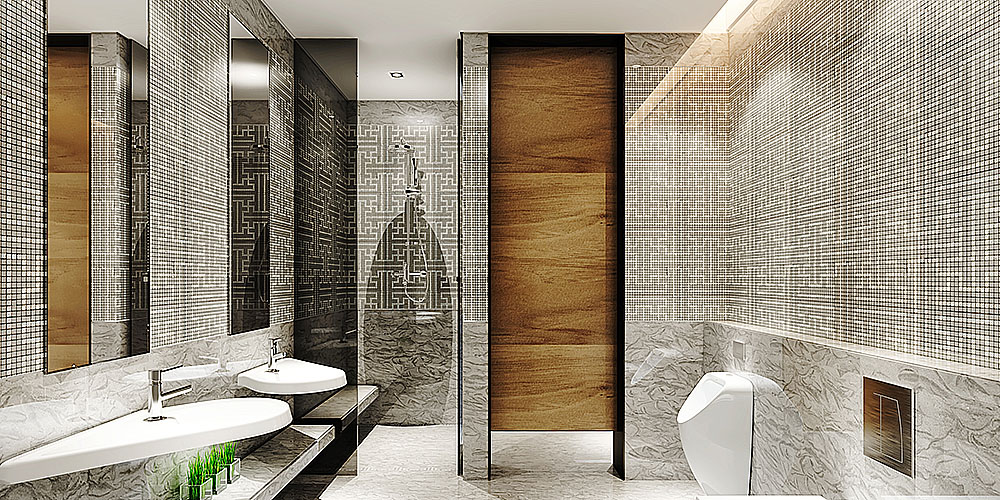Remodeling your kitchen or bathroom can undoubtedly elevate your home’s aesthetics and functionality. However, not everyone has an unlimited budget to achieve their dream makeover. Fortunately, with thoughtful planning and creativity, you can revamp these essential spaces without spending a fortune with the help of bathroom remodelers. Here’s how to get started.
Understanding the Power of Cosmetic Changes
Many homeowners underestimate the impact of simple cosmetic changes. Sometimes, a fresh coat of paint or new fixtures can make a room feel completely new. In the kitchen, repainting cabinet doors and switching out old knobs with modern handles can create a striking transformation. Similarly, in the bathroom, changing faucets, showerheads, or even re-grouting tiles can refresh the space’s look and feel.
Prioritize Key Areas
When working with a limited budget, it’s crucial to identify which areas will provide the most significant impact on remodeling. For instance, in the kitchen, the backsplash is a prominent visual element. Instead of opting for expensive tiles, consider using peel-and-stick backsplash options that offer a trendy look at a fraction of the cost. In bathrooms, focus on the vanity. A new mirror or updated lighting can create a focal point that draws attention and sets the room’s tone.
Repurpose and Recycle
One person’s trash is another’s treasure, as the saying goes. Check local classifieds or thrift shops for materials or fixtures that others are giving away or selling for a nominal fee. An old wooden table can be repurposed into a kitchen island. A vintage dresser can be converted into a bathroom vanity with some modifications for bathroom remodeling Silver Spring. These unique pieces add character to your space and reduce costs.
DIY Where Possible
Labor can be one of the most expensive components of a renovation. While certain tasks, like plumbing or electrical work, are best left to professionals, many aspects of a makeover can be DIY projects. Tutorials and workshops, many of which are available online for free, can guide you through tasks like painting, installing a new backsplash, or updating fixtures. By investing a little time and elbow grease, significant savings can be realized.
Shop Smart
Always be on the lookout for sales, discounts, and clearance items. End-of-season or clearance sales often offer quality products at significantly reduced prices. Additionally, consider alternatives to high-end brands. Many lesser-known brands offer products that are just as durable and stylish but come without the hefty price tag.
Work with What You Have
Instead of replacing everything, evaluate what you can keep. For example, if your bathroom tiles are in good condition but look dated, consider painting them. Special tile paints are available that bond well and offer a durable finish. Similarly, instead of replacing kitchen cabinets, consider refacing them or simply updating the hardware for a fresh look.
Keep the Layout Intact
Major layout changes, such as moving plumbing or electrical systems, can quickly escalate costs. Instead of a complete overhaul, work with the existing layout. If you must make changes, ensure they’re minimal and don’t require extensive professional intervention.
Plan Ahead
One of the critical mistakes homeowners make is not planning adequately. This can result in costly errors or last-minute changes that escalate costs. Before starting, have a clear vision of what you want to achieve. Sketch out designs, even if they’re rudimentary, to serve as a reference. Research prices and set a clear budget. This preparation ensures you stay on track and avoid unnecessary expenses.
Which Type of Bathtub is Right for Your Space?
The bathtub, often the centerpiece of any bathroom, offers an oasis for relaxation and rejuvenation. As homeowners consider redesigning their bathrooms, a recurring debate emerges: should one opt for a freestanding or built-in bathtub? Both styles bring unique aesthetics and functionalities to the table. This article delves deep into the characteristics of each, assisting homeowners in making an informed decision tailored to their individual needs and space constraints.
The Allure of Freestanding Bathtubs
Freestanding bathtubs, as their name suggests, stand alone without any walls surrounding them. These tubs are often associated with luxury and opulence, serving as a statement piece in the bathroom.
- Aesthetics: Freestanding bathtubs, with their elegant curves and distinct profiles, can act as a focal point in a bathroom, drawing attention and creating an atmosphere of luxury. Their design versatility means they come in various styles, from vintage clawfoot designs to sleek, contemporary ovals, ensuring a fit for every decor preference.
- Flexibility in Placement: Unlike built-in bathtubs, which typically reside against a wall, freestanding bathtubs can be placed almost anywhere in the bathroom. This flexibility allows homeowners to position their tub to maximize a view, center it as a showpiece, or even place it close to a fireplace for an ultra-luxurious soak.
- Space Perception: Without walls or enclosures surrounding them, freestanding bathtubs can create an illusion of more space, making the bathroom feel larger and airier.
Built-in Bathtubs: The Classic Choice
Built-in bathtubs are enclosed on three sides, either by bathroom walls or custom-built surrounds. This design has made built-in tubs the standard choice in many homes due to their practicality and efficient use of space.
- Efficient Use of Space: For bathrooms with space constraints, built-in bathtubs can be a more practical choice. Their design allows them to be tucked against walls, utilizing corners and leaving more floor space free.
- Incorporation of Shower: Built-in bathtubs frequently incorporate showers, making them dual-functional. This combination is especially beneficial for households where both bathing and quick showers are routine, eliminating the need for separate spaces for each.
- Cost-effectiveness: Generally, built-in bathtubs tend to be less expensive than their freestanding counterparts. The cost savings extend to installation as well, as freestanding tubs often require specialized plumbing.
- Ease of Cleaning: With their enclosures, built-in bathtubs typically have fewer hard-to-reach areas, making cleaning a bit more straightforward. There’s also less exposed plumbing to worry about, as most of it is concealed behind walls or the tub’s surround.
Making the Decision: Factors to Consider
Several considerations should guide homeowners in their bathtub choice:
- Space: While freestanding tubs can create an illusion of more space, they do require ample room for proper placement. Built-ins, with their ability to nestle into corners, might be better suited for smaller bathrooms.
- Purpose: If the bathtub is intended as a statement piece, a freestanding design might be preferable. However, for daily utility and the inclusion of a shower, a built-in might be more practical.
- Budget: Financial constraints can play a significant role in the decision. While there are budget-friendly options for both types, built-ins generally tend to be more cost-effective.
- Maintenance: Consideration should also be given to cleaning and maintenance. While neither design is particularly high-maintenance, the cleaning process can differ slightly between the two.
Conclusion
Revamping your kitchen or bathroom doesn’t have to deplete your savings. With creativity, research, and a hands-on approach, you can achieve impressive results on a budget. Remember, the goal is to create a space that reflects your personal style and meets your functional needs. So talk with bathroom remodeling contractors Bowie today. With careful planning and a bit of effort, a dream makeover is well within reach, even for those conscious of their spending.


